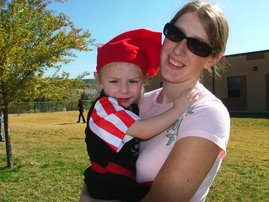
Review II unit II
Nutrition: Digestion, glucose diffusion (diabetes) and diet.
 In these two pictures you can see Diabetic testing supplies. The top picture is a devise that tells you your blood sugar levels. The bottom picture is insulin and syringes.
In these two pictures you can see Diabetic testing supplies. The top picture is a devise that tells you your blood sugar levels. The bottom picture is insulin and syringes.
Nutrition: Digestion, glucose diffusion (diabetes) and diet.
In this picture you can see the human bodies digestive system.
Digestion:
Digestion is a process that starts with your mouth. Food is put into your mouth and chewed up; it mixes with saliva and then is swallowed. When we swallow food it goes threw our pharynx down our esophagus and into our stomach. During digestion food is passed from one organ to the next to be processed. After all usable nutrients are taken from it the remains are expelled from our bodies. Once food enters the stomach it starts the process of digesting proteins. The stomach controls movement into the small intestine. The stomach is very acidic this helps kill off bacteria. From the stomach food slowly enters the small intestine. A duct in the small intestine delivers bile from the gallbladder and liver. The bile helps break down fats. Pancreatic juices are also introduced. The small intestine wall absorbs sugars, amino acids and fatty acids. From the small intestine it moves on to the large intestine. The large intestine includes the colon and the rectum. The colon absorbs water; this forms stool that then exits the body threw the rectum.
Digestion is a process that starts with your mouth. Food is put into your mouth and chewed up; it mixes with saliva and then is swallowed. When we swallow food it goes threw our pharynx down our esophagus and into our stomach. During digestion food is passed from one organ to the next to be processed. After all usable nutrients are taken from it the remains are expelled from our bodies. Once food enters the stomach it starts the process of digesting proteins. The stomach controls movement into the small intestine. The stomach is very acidic this helps kill off bacteria. From the stomach food slowly enters the small intestine. A duct in the small intestine delivers bile from the gallbladder and liver. The bile helps break down fats. Pancreatic juices are also introduced. The small intestine wall absorbs sugars, amino acids and fatty acids. From the small intestine it moves on to the large intestine. The large intestine includes the colon and the rectum. The colon absorbs water; this forms stool that then exits the body threw the rectum.
 In these two pictures you can see Diabetic testing supplies. The top picture is a devise that tells you your blood sugar levels. The bottom picture is insulin and syringes.
In these two pictures you can see Diabetic testing supplies. The top picture is a devise that tells you your blood sugar levels. The bottom picture is insulin and syringes.Glucose: Glucose enters the body when you eat a meal. The glucose enters the blood stream and as a result your pancreas secrets insulin. The pancreas releases insulin into the blood stream to control high glucose levels. Cells take up the glucose and it is removed from the blood stream. The liver stores glucose so that it can be used later. In diabetes the pancreas does not produce insulin properly. So the diabetic person can have too low of blood sugar (glucose) called hypoglycemia or too high hyperglycemia. If they are too low they have to eat something with sugar, if they are too high they have to get an insulin shot. The majority of people that have diabetes in America have type 2, which can be caused by obesity. Diabetes can cause blindness, kidney disease and cardiovascular disease.
This is a picture of differant kinds of food.
Diet: An average adult woman is supposed to eat only 2,000 calories a day. A man is supposed to eat 2,500 a day. We are supposed to eat a balanced diet meaning several things from each different food group a day. By eating a variety of foods we can get our needed vitamins and minerals. According to the food pyramid we are suppose to eat 5-11 bread and grain servings a day, 2-4 fruit, 3-5 vegetable, 2-3 dairy and 2-3 meat and protein servings a day. This sounds like a lot but a serving size is not as big as most of us eat. There is a big temptation to eat things that are only supposed to be eaten sparingly. Like chocolate, candy and potato chips. Also how you cook the food can change the fat content. For example if something is baked it has less fat than being fried. The vitamins we get out of our food are very important. If we eat a diet lacking curtain vitamins illness can occur. For example a lack of vitamin C causes scurvy, vitamin D deficiency causes rickets. We have to learn to eat things that not only taste good but that are good for us.



1 comment:
Great essay. You did a great job paying attention to detail and getting the facts relayed on in a manner that is easy to follow. Thanks for all of the great information. Jordan
Post a Comment